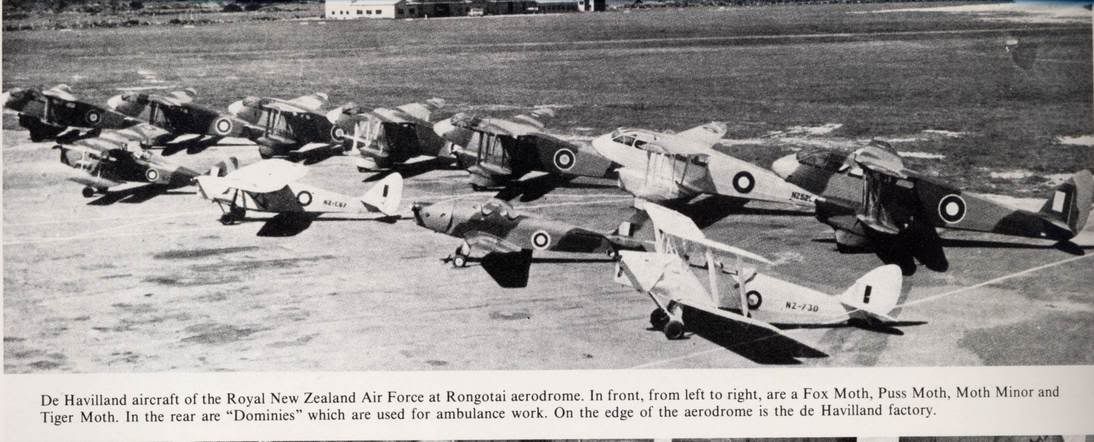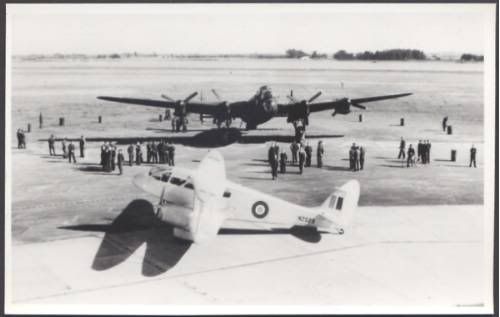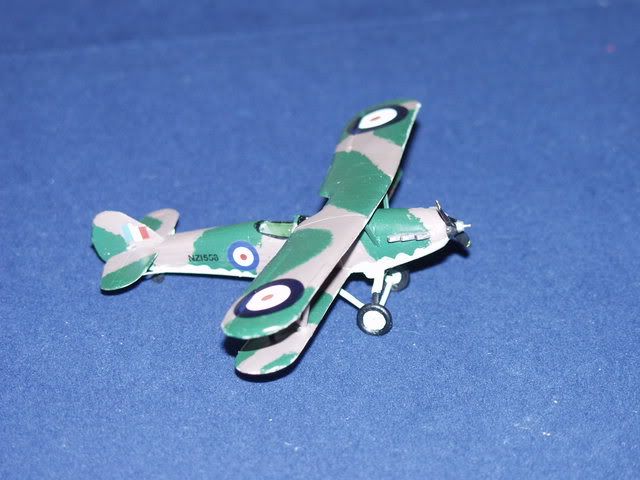|
|
Post by Bruce on Feb 27, 2005 21:25:30 GMT 12
Gidday,
I am building a (very Large) collection of 1/72 scale model aircraft of the RNZAF and on several occaisions I have come across the problem of Colour schemes. I often have some really good photos of my intended subject, but almost always they are in black and white. You cannot accurately interpret tonal values of 1940s B&W photos as some film emulsions dramatically altered tones, sometimes even the yellow of roundels etc appeared black. I have good references about the actual shades of commonly used paints, but I just need to know what colours were actually used. For example can anyone confirm that most Hawker hinds were camoflaged in Dark Earth and Dark green upper surfaces and yellow undersides? Can anyone remember a Camoflaged Dominie (Rapide) and what colours were used?
Cheers, Bruce.
|
|
|
|
Post by Dave Homewood on Feb 27, 2005 21:40:46 GMT 12
The trainer Hinds were apparently silver, according to Mike Subritzky when I asked him a few weeks ago. His family has four of them (well three now, one they are restoring for James Slade). As for the Camouflaged bomber versions, I do know that they did fly in the New Zealand scheme of NZ Blue/NZ Green upper with Sky lower. But I don't know what they were painted like before the repaint into that scheme, which became standard on all RNZAF aircraft at home. As for Rapides, there were camouflaged ones. They look from this photo (from the Auckland Weekly News of No. 42 Sqn examples lined up at Rongotai) to be in the standard Dark Earth/Dark Green camo, but it is hard to tell. Earlier when the Dominies/Rapides were operational aircraft, in the General Reconnaissance role, they were in silver. Some flew in Fiji in that scheme but were mostly wiped out by a cyclone.  |
|
|
|
Post by Dave Homewood on Feb 27, 2005 21:45:42 GMT 12
This one is not a good scan, I right-clicked it from Trademe.co.nz It shows NZ529 beside A66-1, the RAAF Lancaster that visited NZ in June 1943, so that gives you an idea of the schemes at that time frame (the silver ones in Fiji were there in 1941). So they must have had a mix of schemes, much like No. 42 Sqn did when they had the Andovers.  |
|
|
|
Post by Bruce on Feb 28, 2005 21:01:50 GMT 12
Hi Dave, Thats an awesome photo of the Dominies at Rongotai - I think that helps me make up my mind that my Dominie model will be in camo- just what camo needs to be clarified!
I knew that Hinds started off in silver, but in approx 1939 - 1940 they started getting camoflaged, initially with the top colours extending about halfway down the fuse sides (underside was yellow). By 1941 the camoflage was taken further down the fuse and the aircraft started being converted back to bombers - Harvards were taking over in the training role then anyway. For the first phase it is likely that the top colours were Dark earth and Green, as Harvards, Tigers and Ansons were certainly using those colours at the time. I beleive that the Pacific blue / sky would have been introduced at the later phase if this was the case, as many photos show a wavy line separating top and bottom colours - it is unlikely that anyone would try a disruptive pattern with Trainer yellow! However we still have the problem of interpreting the old photos - Would be great to hear from someone who was actually there at the time. Incidentally Dominies also gained blue cheatlines late in the war /early postwar. NZ528 is currently based at Ardmore in those colours (aparently accurate) but I already have plenty of other aircraft in those colours (likewise overall silver!) and I would like something a bit different.
Cheers,
Bruce.
|
|
|
|
Post by Dave Homewood on Feb 28, 2005 21:49:51 GMT 12
Have you checked Charles Darby's book, 'RNZAF The First Decade'? It states what you say, July 1941 trainer - Dark Green, Dark Earth and Trainer Yellow more than halfay up the side.
The Army Co-operation versions wore camo right down with wavy demarkation between top camo and bottom colour. It says No. 6 Sqn's Hinds were Dark Green, Dark Earth and Sky. That Sqn split to become No's 20 and 21 Sqns, so i guess the colours stayed the same then.
The book also has a colour plate of NZ1502 totally in Trainer Yellow, no camo.
Looking closely at the Dominies in the first photo I posted, doesn't it look as though the noses are a lighter colour than the other parts of the camo? Perhaps they were three toned? I can't imagine why they'd paint the nose lighter but note that it can't just be the light because the same effect doesn't appear on the Fox Moth and Moth Minor.
That camoflaged Fox Moth is also interesting.
It is dificult to know what the actual colours are without the date. I don't recall the date, but this was scanned from one of those compendium books of the Auckland Weekly News on the 1940's (see any library, big pink books), so that should give you the year at least. If it is post mid 1942 I'd say NZ Pacific Blue/NZ Foliage Green/Sky Green under as noted in Darby's book for the Hudson, P40, etc.
Note in the photo how the red of the roundels has almost disappeared due to the print. We had a similar discussion on photos tricking with colours on the Flypast Forum which never got resolved.
|
|
|
|
Post by Bruce on Mar 20, 2005 19:13:11 GMT 12
As mentioned on one of the other threads (the one about the beautiful Vincents I think....) I have completed the model of the Hind. Although it is completed as a "Trainer" version, in NZ the "Trainers were actually bombers with Dual controls and a different rear seat, but still with the "Bomber" cockpit Coaming. As such I could finish it in either a trainer or Army co-op scheme, but I finally settled on a "Generic" Army co-op scheme in the end because I already have plenty of yellow aeroplanes. Below are a couple of pics Dave asked for. the kit is a Merlin brand kit, which has really shocking mouldings, but fortunately I had THREE similar kits (Hind Bomber, Hind Trainer and Osprey) and could select the best bits of each! The merlin kits were treissues of the very old FROG kits, and it appears the moulds were taken off a Frog Original - with consequent loss of quality. With a Lot of work and patience a really nice finish can be obtained.   |
|



